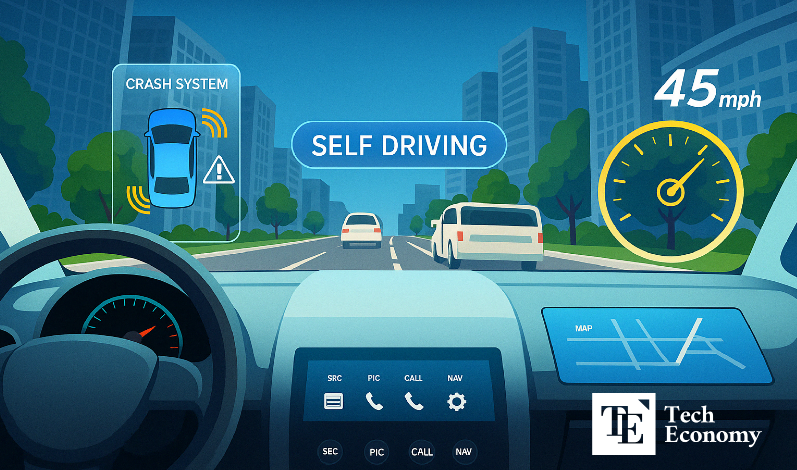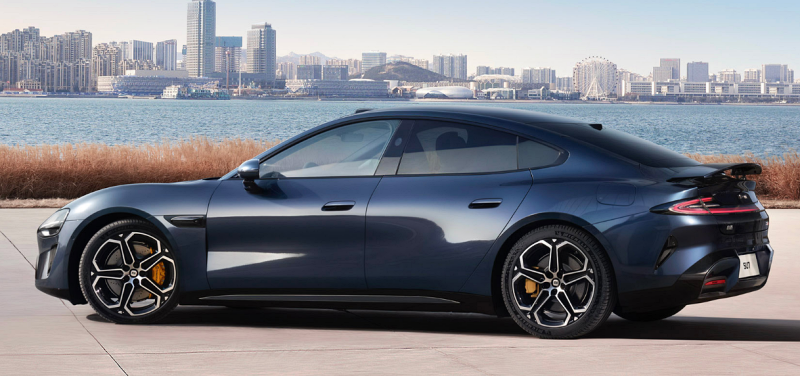China Bans the Use of the Phrase 'Autonomous Driving' in Advertisements, Wary of Technological Illusions
Input
Modified
Aftermath of the Xiaomi Electric Vehicle Crash That Killed 3: Debate on the Limits of Autonomous Driving Under Renewed Scrutiny The Essence of the Technology Remains at the Level of ‘Driver Assistance’

In a bold regulatory move that has captured the attention of the global automotive industry, the Chinese government has officially banned the use of phrases like “autonomous driving” and “smart driving” in automobile advertisements. Authorities argue that such terms foster misleading expectations among consumers—suggesting that vehicles can fully operate without human intervention. The sweeping ban applies to all manufacturers, from international giants like Tesla to homegrown tech disruptors like Xiaomi. At the heart of the decision lies growing concern that the illusion of self-driving technology is advancing faster than the technology itself, and with deadly consequences.
A Tragedy That Sparked a Reckoning
The urgency behind this policy shift was brought into sharp relief by a tragic crash involving Xiaomi’s first electric sedan, the SU7, in March. On the night of March 29, a high-speed accident on a highway in Anhui Province claimed the lives of three young passengers, including the driver, Mr. Luo. The vehicle had its Navigate on Autopilot (NOA) function activated and was traveling at 116 kilometers per hour when it issued a warning about an obstacle. Despite the driver's attempt to slow down manually, the car crashed into a guardrail just two seconds later. The impact triggered a battery explosion, setting the vehicle ablaze and leaving no survivors.
This incident shattered any lingering public confidence in the idea of safe, driverless travel. While automakers often describe NOA as a “driver assistance” feature, their marketing narratives frequently imply far greater autonomy. Consumers, drawn in by the allure of “autonomous driving,” entrust their safety to these systems, often unaware of their limitations. The fact that the SU7 was Xiaomi’s debut model only deepened concerns about the adequacy of its safety protocols. Unverified reports suggesting that the doors failed to unlock during the fire have further fueled scrutiny.
Responding swiftly, Chinese authorities issued new guidelines requiring manufacturers to provide clear and accurate descriptions of all intelligent features. Some local governments are also considering mandatory in-vehicle labels that explicitly define the operational limits of these technologies. The nationwide advertising ban on terms like “autonomous driving” and “smart driving” is a central element of this broader campaign. Officials have emphasized that the move is not targeted at individual companies but is instead aimed at rebuilding public trust in automotive innovation as a whole.

Reimagining Autonomy Through Cooperation
With confidence in traditional “autonomous driving” eroding, both regulators and manufacturers are turning to a more collaborative concept: cooperative autonomous driving. This paradigm shift moves away from a vehicle's independent decision-making and instead relies on real-time communication between vehicles, and between vehicles and surrounding infrastructure. By distributing responsibility across a connected network, cooperative driving aims to compensate for the technical and ethical limitations of current automation.
Automakers are already adjusting course. Despite years of aggressive development, the commercialization of Level 4 autonomy—which allows for fully self-driving operation under certain conditions—has hit numerous roadblocks. Legal liability, ethical dilemmas, and societal resistance have slowed progress significantly. Even after reaching advanced development milestones, companies like Hyundai, Mercedes-Benz, and General Motors remain in testing phases, cautiously avoiding mass rollouts. Meanwhile, Argo AI—a high-profile autonomous driving startup backed by Ford and Volkswagen—shut down entirely, signaling a shift in industry priorities.
This recalibration is mirrored in infrastructure policy. A prominent example is the Cooperative Intelligent Transport System (C-ITS), which allows vehicles to receive real-time updates about road conditions, traffic incidents, sudden stops, or debris. South Korea’s Ministry of Land, Infrastructure and Transport is actively piloting and validating C-ITS technology to enhance road safety—not just for smart vehicles but for all drivers. Authorities increasingly believe that integrating vehicles into a smart, connected ecosystem is a safer and more efficient path forward than expecting each vehicle to navigate every scenario alone.
Beyond the Illusion: Toward a Realistic Future
What’s emerging is not a retreat from technological innovation, but a restructured, more grounded vision of the future. Experts agree that the era of selling dreams about fully autonomous vehicles is giving way to a reality rooted in transparency, safety, and accountability. Automakers are no longer racing blindly toward a futuristic ideal; instead, they are emphasizing verified capabilities and responsible deployment.
This philosophical shift is also reshaping consumer expectations. The language of “full autonomy” is being replaced by a focus on cooperation, supported decision-making, and clearly defined boundaries. While it may seem like the industry is pumping the brakes, this recalibration could prove vital for its long-term credibility and sustainability.
In many ways, China’s regulatory crackdown serves as both a wake-up call and a corrective measure. As the risks of technological overreach come into sharper focus, a more cautious, collaborative, and mature approach to innovation is taking hold. And with that, the automotive world is not abandoning autonomy—but rather rebuilding it on firmer, more responsible ground.





















